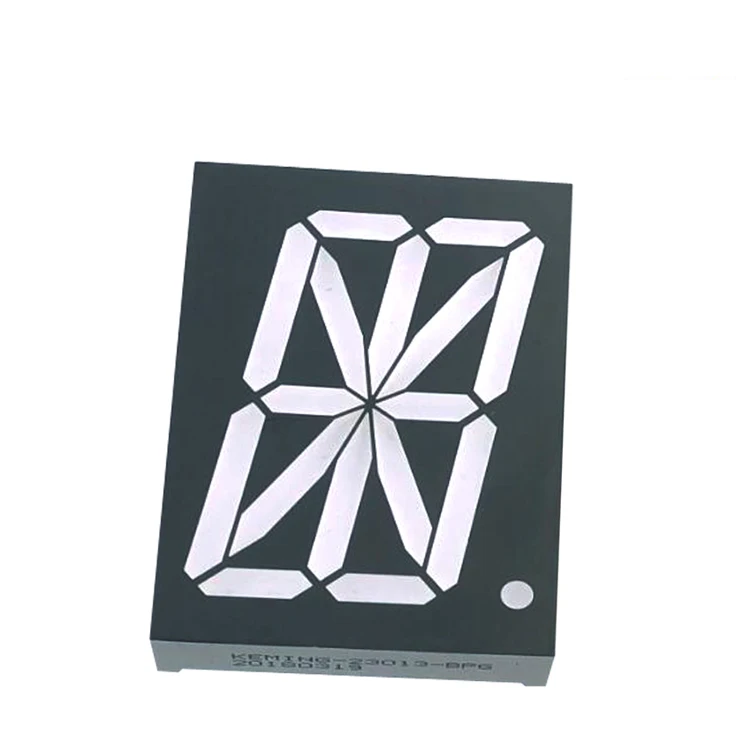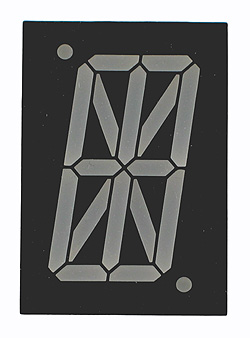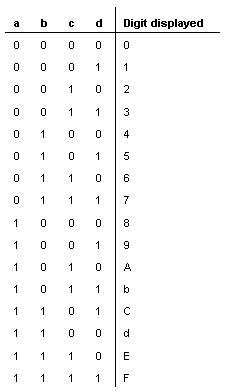'14 Segment LED Display' is a detailed and extensive reproduction of an 14 segment LED Display which is especially used in electrical devices like automobile radios and hi-fi systems. Even though these electrical devices mostly use capital letters and numbers only, '14 Segment Display' also includes lower case letters, a lot of punctation. A fully tested and assembled Adafruit 4-Digit 14-Segment LED Matrix Display FeatherWing Ultra-bright 4-digit 0.54' tall segmented display Two sixteen pin headers A bit of soldering is required to attach the matrix onto the FeatherWing but its very easy to do and only takes about 5 minutes!
Answers to Questions (FAQ)
How does a 7 segment display work?
Basically, the display consists of seven segments identified by a letter (from a to g), organized as follows: 7-segment' loading='lazy' /> and each segment is generally associated with an LCD screen or a LED and can thus be activated / on 1 or off 0. There are a total of 128 possible combinations of display, although it is most often the combinations for the 10 digits (from 0 to 9) that are used.
How to encrypt with a 7 segment based cipher?
7 Segment Display Driver.
Segment combinations can represent characters. A combination is generally identified by a series of 1 to 7 letters (from a to g) corresponding to the activated segments.
It is also possible to identify them with a binary string 1 = active, 0 = inactive, starting from the end gfedcba. In this way a is 0000001 and g is 1000000
Example: has all active segments coded either abcdefg or 1111111
Example: has the 4 bottom segments active, coded either 'c, d, e, g' or 1011100
The 7-segments displays may be common cathode (CC) or common anode (CA), in this second case the 0 and 1 are switched.
How to decrypt a 7 segment cipher?
Associating an abcdefg code with a display consists of illuminating / activating the corresponding segments.
14 Segment Display Arduino
Example:abcdefg illuminates all segments and displays
Example:bcdeg illuminates segments b,c,d,e,g and displays

What is a common anode or common cathode display?
Adafruit 14 Segment Display Tutorial
In a common cathode display, these are connected to the low potential, a segment is displayed by activating it in its logical 1 position.
In a common anode display, these are connected to the high potential, so a segment is displayed by activating it in its logical 0 position.


How to recognize a 7 segment ciphertext?
The code consists of the letters a,b,c,d,e,f,g only, in groups of 1 to 7 letters without repetition.
14 Segment Display Font
For the binary variant, the codes are normally on 7 bits from 0000000 to 1111111.
The presence of a calculator, a clock or a digital watch or the characters 7SEG are clues.
What are the variants of the 7 segment display?

There exists also 9 segment displays (with an additional 2 segment diagonal), 14 segments (with 2 diagonals and a central vertical bar) or 16 segments (identical to the 14 segments but with the top and bottom segments cut in half).
The Beghilos code uses the 7 segments with a reverse reading (backwards).
When 7 segment displays was invented?
The first patents date from the beginning of the 20th century (1903, 1908, 1910) but the advent of the displays came in the 1970s.
Source code
dCode retains ownership of the online '7-Segment Display' tool source code. Except explicit open source licence (indicated CC / Creative Commons / free), any '7-Segment Display' algorithm, applet or snippet (converter, solver, encryption / decryption, encoding / decoding, ciphering / deciphering, translator), or any '7-Segment Display' function (calculate, convert, solve, decrypt / encrypt, decipher / cipher, decode / encode, translate) written in any informatic language (Python, Java, PHP, C#, Javascript, Matlab, etc.) and no data download, script, copy-paste, or API access for '7-Segment Display' will be for free, same for offline use on PC, tablet, iPhone or Android ! dCode is free and online.

Need Help ?
Please, check our dCode Discord community for help requests!
NB: for encrypted messages, test our automatic cipher identifier!